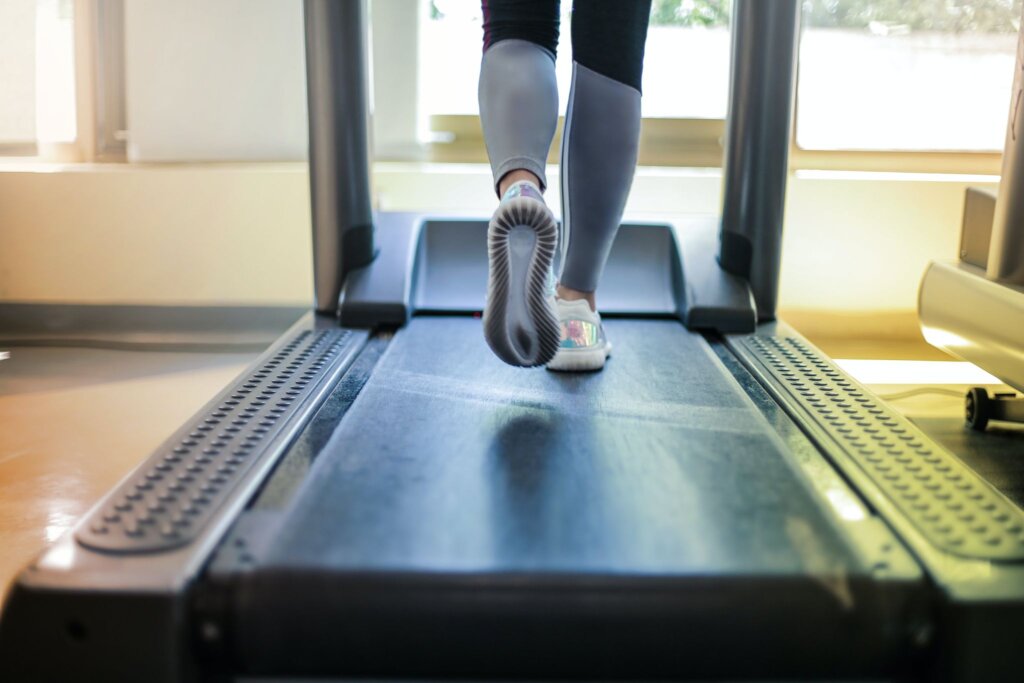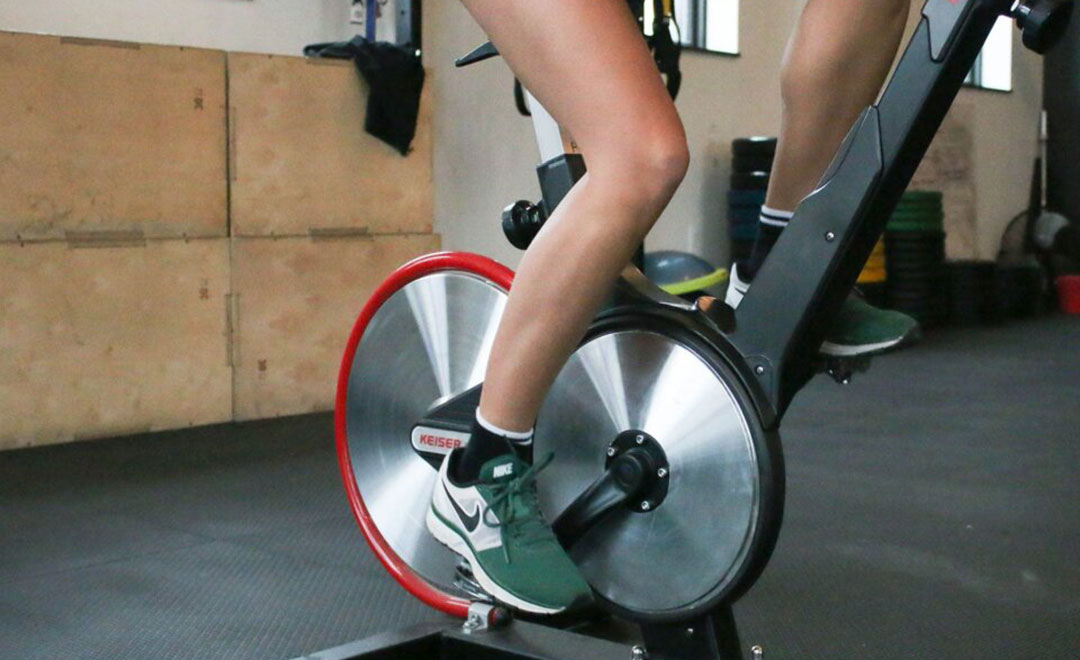Stationary Bike vs. Treadmill vs. Elliptical: Which Option Should You Choose?
This beginner-friendly guide will help you select the best exercise equipment for you.
Adults who engage in at least 150–300 minutes of moderate exercise per week, or 75–150 minutes of vigorous activity, tend to maintain better health for a longer period of time. Going beyond these guidelines may help people to live even longer, the American Medical Association reports.
Stationary bikes, treadmills, and ellipticals can give you a great cardio workout, benefiting your heart and overall health. And with each of them, you can opt for any level of intensity you choose. This means you can start using them at any fitness level, then continue adapting your workout to fit your needs. Techniques like high-intensity interval training (HIIT) work well with these machines, and many models come with handy preset workouts. Plus, you can easily pop on a podcast or TV show while you’re working out with any of them!
But what are the differences between these exercise machines? We’ll provide a beginner-friendly overview of the main benefits of stationary bikes, elliptical machines, and treadmills, as well as their drawbacks, so you can make an informed choice on the right one for you.

Stationary Bike
A stationary bike gives you most of the benefits of road biking, but without the added hazards. Let’s examine stationary bike benefits, drawbacks, and average calories burned.
Benefits
Stationary bikes can deliver a range of benefits, such as:
- A stationary bike gives you a low-impact workout. Your joints won’t be constantly jolted as you cycle.
- Stationary cycling strengthens your cardiovascular health, decreasing blood pressure, cholesterol, and body mass. One study found that indoor cycling can decrease systolic blood pressure (SBP) by 4.3% after three months and 11.8% after six months.
- Biking helps you maximize your oxygen intake. Over time, you can gain more energy and increase your stamina by using a stationary bike regularly.
- Stationary cycling is great for people with arthritis. It can even ease their symptoms by lubricating the joints and increasing muscle tone, allowing the muscles to better support the joints, according to the Arthritis Foundation.
- Cycling strengthens the muscles in your lower body substantially. “Your glutes, quads, hamstrings, and calves are all activated when you pedal, and by dialing up the resistance on your bike, you can increase the strength challenge on these muscles,” writes Jenny McCoy in Self.
- Your core and posture can improve from cycling as well if you work to maintain proper posture during your workout.
- Indoor cycling can even improve bone mineral density, potentially decreasing the risk of fractures, research published in the journal Medicina has found.
- Since your feet stay firmly on the pedals, using a stationary bike can be a relatively safe form of exercise.
- Stationary bikes can also be a compact option for a home gym.
In addition to these stationary bike benefits, consider the calories they can help you burn during your exercise routine.
Estimated Calories Burned
Understanding calorie burn calculations
For a person who weighs 150 pounds, a moderate 60-minute workout on a stationary bike burns an average of 480 calories. Meanwhile, a 60-minute elliptical machine workout burns roughly 340 calories. Walking briskly on a treadmill would burn about 270 calories, although this could be increased by changing the incline.
Keep in mind that these numbers are only estimates and will vary based on individual factors (such as age, gender, and fitness level) in addition to the type of equipment and level of resistance used.
Drawbacks
The seat of a stationary bike can feel uncomfortable to some people at first. However, padded shorts and proper form can help over time.

Treadmill
You’ve likely used a treadmill at some point in your life. But what are the key health impacts of doing so? Let’s explore them now.
Benefits
There are many benefits to using a treadmill, such as:
- A regular cardio workout on a treadmill lowers blood pressure, reduces risk of heart disease, and improves overall health. Because running is a weight-bearing activity, a treadmill can potentially provide a more challenging workout than a stationary bike or elliptical machine, although this varies based on workout speed and intensity.
- The impact of a treadmill can promote increased bone density.
- Working out on a treadmill can burn substantial calories. Using a combination of speed and incline changes, you can do HIIT exercises effectively.
- You can vary your workout between walking, jogging, and sprinting, providing lots of flexibility.
- The treadmill engages your core muscles more than an elliptical.
- If you’re training for a marathon, the treadmill is your best bet, as it can prepare you for long-distance running.
To make your workout even more challenging, you could consider using a non-motorized treadmill, which is powered by your own feet.
Estimated Calories Burned
What about estimated calories burned on a treadmill? A person who weighs 150 pounds running at approximately six miles per hour burns around 550-680 calories per hour, though this will vary based on speed, incline, and other factors.
Drawbacks
If you’re prone to falling or have a high risk of bone injuries like shin splints, the treadmill could pose a risk. Likewise, if you have arthritis, the treadmill may not work for you because of the impact involved. However, some treadmills do have built-in shock absorption, which can lower the impact to some extent.

Elliptical
Elliptical machines move with a gliding motion, like a mix of skiing and climbing stairs. The motion is similar to running, although it’s not quite the same as running on a treadmill.
Benefits
Ellipticals have numerous benefits:
- The elliptical is super beginner-friendly, making it one of the least intimidating cardio machines you’ll see at the gym.
- Ellipticals are also low-impact, meaning they’re easy on the knees, ankles, and hips. If you want to take it easy on your joints or are recovering from an injury, the elliptical may be right for you.
- Like bikes and treadmills, the elliptical can provide a great cardio workout that lowers blood pressure and improves health and fitness.
- The elliptical works more muscle groups than a treadmill, especially if you’re using a cross trainer that integrates hand movements. Plus, you can cycle backward to target muscles in different ways.
- Many also have arm handles, so you can give your upper body some gentle resistance training.
- Most machines allow you to increase the resistance, boosting the difficulty of your workout.
- The elliptical machine can help improve your balance as well. There also may be less risk of falling than on a treadmill, as your feet stay in one place.
These elliptical benefits make them a popular option at gyms across the country.
Estimated Calories Burned
Depending on your weight and the intensity of the workout, you can burn 285 to 420 calories an hour on the elliptical. A woman who weighs 170 pounds will burn an average of 385 calories per hour on an elliptical machine. Doing a HIIT workout on the elliptical will increase this number.
Drawbacks
The elliptical doesn’t target your core muscles as much as running on a treadmill. Plus, the machine does some of the work of moving for you, meaning it may not burn calories as efficiently as a treadmill.
Furthermore, elliptical machines may be the least accurate in terms of calorie counting. They may overestimate calories burned by 20–42%. Health experts say the machine’s calorie count doesn’t factor in how momentum is built up during a workout. However, that’s not a reason to avoid ellipticals. You can estimate the calories you’ve burned manually, using an online calculator, and the workout is still highly beneficial.
The bottom line
Whichever option you’re considering, remember that weight affects calorie burn—a person who weighs 190 pounds will expend more energy performing the same exercise as a person who weighs 140 pounds. Increased muscle mass will enhance calorie burn as well.
Do you enjoy one of these options more than the others? Consider your own preferences and fitness objectives when making a choice. If you have any health concerns, talk with your doctor about the best option for you as well.
By understanding treadmill benefits, as well as the benefits of stationary bikes and elliptical machines, you can tailor your workout to your needs. And of course, you can consider using more than one of these machines in order to work more muscle groups without overstressing any of them.
If you’re still not sure which option is right for you, our certified Personal Trainers are here to help. Reach out today!


